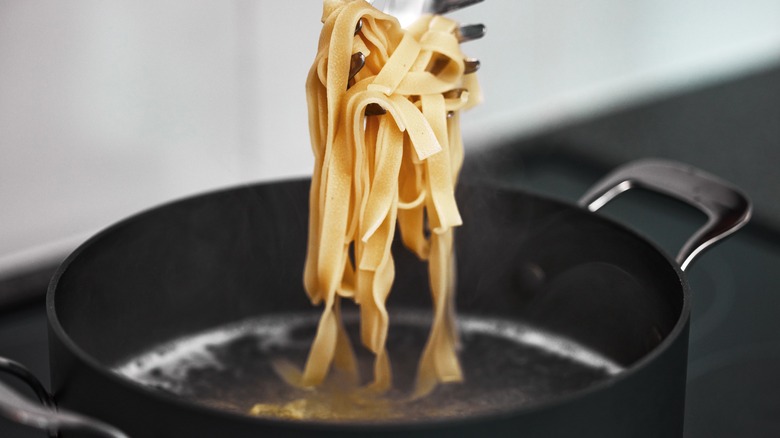Why You Should Undercook Your Pasta, According To Rachael Ray
A great dish is about more than just flavor. As the folks behind the Michelin Guide explain, great food begins with quality ingredients, picked at their peak and prepared in a manner that highlights its essence like a perfectly ripe mango, served at room temperature that balances the heavy courses served before it. A great dish is a joy to eat, combining texture with terrific flavor, and using artistry to appeal to all your senses. That doesn't mean using tweezers to apply microgreens to Tuesday night's meatloaf, but applying the same balance you'd use to season a recipe should be used to present the final dish, like adding freshly chopped herbs to an otherwise brown beef stew that's been simmering for hours on the stove—balancing freshness and brightness with a depth of flavor.
Globally, Italian food reigns supreme as the most popular cuisine, with pizza and pasta taking the top spots. According to YouGov America, 88% of Americans agree, making "Wednesday Prince Spaghetti Day" for most of the nation. Although pasta is a relatively inexpensive ingredient to feed your family, like any dish, using quality ingredients and proper technique can make the difference between a good meal and a great meal, even when three ingredients are involved, as in cacio e pepe.
Celebrity chef Rachael Ray explains how to properly cook your favorite starch, whether it's penne, fettucini, or orecchiette, so it's perfect by the time you twirl your fork around your first bite.
Pasta al dente
Al dente, the Italian phrase 'to the tooth,' is commonly used to describe the perfect texture of cooked pasta. "Firm with a slight chew" is the ideal level of doneness when cooking any pasta, keeping in mind that each brand requires a different amount of cooking time, and fresh pasta cooks quicker than dried pasta.To achieve al dente pasta, Rachael Ray describes, in an Instagram post, pasta should be removed from boiling water at least one to two minutes before it's done. Due to "carryover cooking," pasta should be undercooked for a few minutes when removed from its heat source. The pasta will continue to cook for several additional minutes off the heat, making it the perfect texture when it gets to your table.
Pasta al dente is tender with resistance without being crunchy or mushy. According to Masterclass, when biting into pasta al dente, you should "see a tiny white dot in the center." America's Test Kitchen says "carryover cooking" occurs in other forms of cooking like baking and roasting, where a difference in a few degrees in internal temperature can turn an expensive cut of meat into shoe leather and dry out an entire loaf of bread.
Remember to reserve some pasta water when draining the pasta to bring the dish together, regardless of what sauce you add. The salty, starchy water is the secret to making any pasta dish better.

